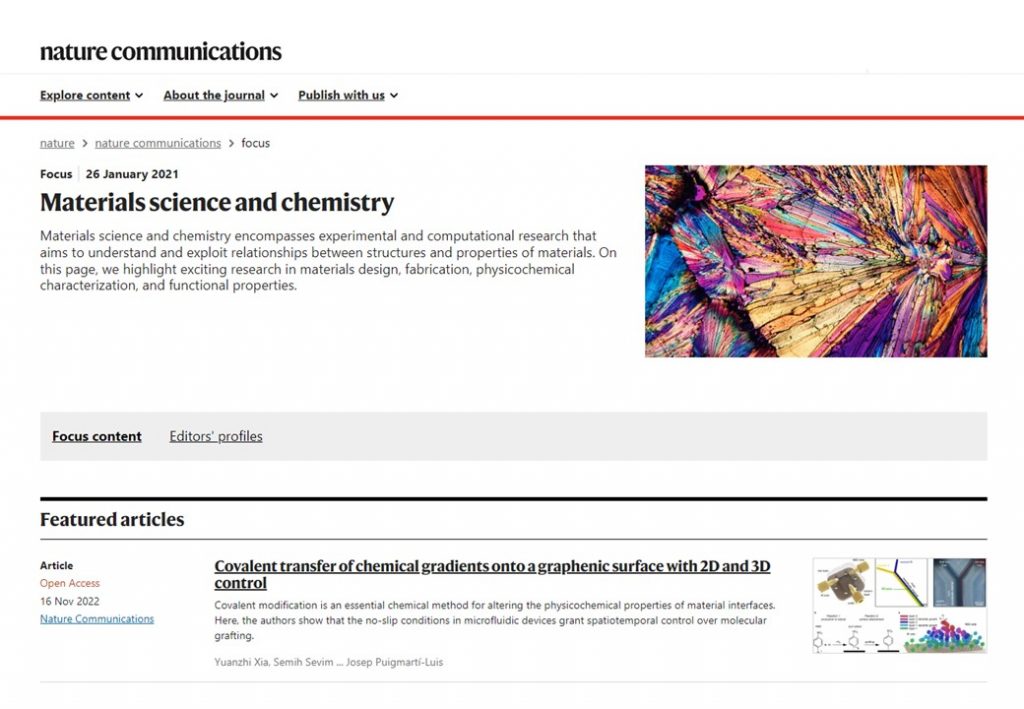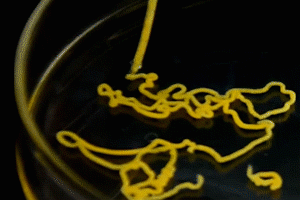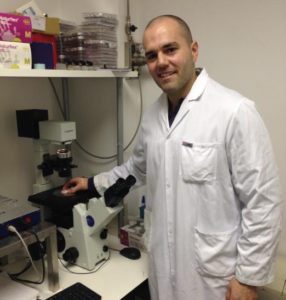
Our work Highlighted!
Controlled chemical gradients on surfaces
Nat.Commun. 16 Nov 2022
In this occasion, Nature Communications highlights our work as a featured article. “Featured articles are selected based on exciting research in materials design, fabrication, physicochemical characterization, and/or functional properties.”

New mechanism to transfer chirality between molecules in the nanoscale field
EurekAlert! – 27 April 2021
“Our study provides a new fundamental insight of the mechanisms underlying the chirality transfer, demonstrating that this intrinsic property of living matter is based on the interaction of physical and chemical restrictions acting synergistically across multiple length-scales,” concludes Prof. Josep Puigmartí-Luis.

Research reveals a new mechanism to transfer chirality between molecules in the nanoscale field
Phys.org – 26 April 2022
“For this to work, we need to understand and characterize the transport phenomena occurring within the reactor, namely, the fluid dynamics and the mass transport, which determine the formation of reagent concentration fronts and the positioning of the reaction zone in regions of specific chirality,” notes Prof. Josep Puigmartí-Luis.

New mechanism to transfer chirality between molecules in the nanoscale field
News U. de Barcelona – April 2022
If we compare the right to the left hand, we can see these are specular images —that is, like symmetrical shapes reflected in a mirror— and they cannot superimpose on each other. This property is chirality, a feature of the matter that plays with the symmetry of biological structures at different scales, from the DNA molecule to the tissues of the heart muscle.

Simulated microgravity system created to experiment with materials
EurekAlert! – 21 September 2021
Crystallization studies conducted in space laboratories, which are costly and unaffordable for most research laboratories, showed the valuable effects of microgravity during the crystal growth process and the morphogenesis of materials. Now, a research study led by a scientific team of the University of Barcelona, has created an easy and efficient method to achieve experimentation conditions of microgravity on Earth that simulate those in space.

Variable-stiffness catheter could increase the safety of robotic eye surgery
Physics World – 12 Agust 2021
A surgical catheter that can change its rigidity as needed during operations has been developed by researchers from Switzerland and Spain. The tool – the core of which is built from a tailored phase-change alloy – could improve the safety of minimally-invasive ophthalmic surgeries.
by Ian Randall

Researchers Synthesize 2D Porous Crystalline Materials in Simulated Microgravity
AZO Materials – 30 July 2021
This new simulated microgravity system will be like a ‘playground’ for chemists, physicists, and materials scientists who want to process 2D functional devices and materials.
by Laura Thomson

A simulated microgravity system has been created to experiment with materials
Noticiasdelaciencia – 30 July 2021
Para conseguir estas condiciones de microgravedad simulada, se ha recurrido al uso de dispositivos microfluídicos personalizados para fabricar estructuras moleculares de cristales porosos en dos dimensiones. Según explica el Prof. Josep Puigmartí Luis, investigador ICREA en el Departamento de Química Física y miembro del Instituto de Química Teórica y Computacional (IQTCUB) de la UB, «se ha podido confirmar que los experimentos bajo estas condiciones de microgravedad simulada tienen efectos sin precedentes en la orientación, la compacidad y la generación de materiales 2D cristalinos y porosos».
by Noticiasdelaciencia

Simulated microgravity system created to experiment with materials
Phys.org – 29 July 2021
“The spatio-temporal control in the growth of this material obtained with the simulated microgravity conditions is unprecedented in the scientific literature. The microfluidic device has allowed us to develop centimeter-long thin layers and study the previously undescribed electronic properties of the material”
by PhysOrg

UB experts develop a microgravity system to experiment with materials
Europa Press – 29 July 2021
Expertos de la UB idean un sistema de microgravedad para experimentar con materiales Con estos dispositivos se han fabricado estructuras moleculares de cristales porosos en dos dimensiones –formados por una sola capa de átomos– y se ha podido confirmar el sistema que tiene efectos “sin precedentes en la orientación, la compacidad y la generación de materiales 2D cristalinos y porosos”.
by Europa Press

Simulated microgravity system created to experiment with materials
Universitat de Barcelona – 29 juliol 2021
Crystallization studies conducted in space laboratories, which are costly and unaffordable for most research laboratories, showed the valuable effects of microgravity during the crystal growth process and the morphogenesis of materials. Now, a research study led by a scientific team of the University of Barcelona, has created an easy and efficient method to achieve experimentation conditions of microgravity on Earth that simulate those in space.
by Bibiana Bonmati

Simulated Microgravity for Chemistry and Materials Synthesis
Exterior.cat – 19 juliol 2021
El professor d’investigació d’ICREA, Josep Puigmartí (Artés, 1978) acaba de publicar un article a la revista Advanced Materials sobre la creació de materials 2D emprant condicions que simulen la microgravetat que s’experimenta a l’estació espacial internacional, un procés diferent del que s’utilitzava fins ara.
Fugint de les mescles que creen turbulències i corrents de convecció i apostant per un mesclat controlat al laboratori, l’equip que encapçala el bagenc a la Universitat de Barcelona (UB) posa en valor els avantatges que es podrien obtenir en cas de dirigir les investigacions en el camp de la química i de la síntesi de materials emprant aquestes condicions.
by Quim Miró

Micro-Nanorobots to clear blood clots
Nanowerk – 25 May 2021
Professor Salvador Pané and Professor Josep Puigmartí-Luis, researchers in the ANGIE project, hope targeted drug delivery will allow doctors to treat a greater number of stroke patients more effectively. Ischaemic strokes, which occur when blood clots cut off the flow of blood in the brain, are a leading cause of death in the European Union, with more than 1.1 million people suffering strokes each year.
by Nanowerk

Nanorobots could target cancers and clear blood clots
Horizon Magazine – 25 May 2021
“If treatments could be directed to the location in a vein or artery where a clot is occurring, they could be cleared far more effectively.
In ANGIE the researchers are creating tiny nanorobots that can do just this and deliver the drug directly onto the clot.
‘They really are robots – you’re able to control them, accelerate, stop, move them in all three directions,’ said Prof. Puigmartí-Luis, a chemist at the University of Barcelona in Spain. In principle, they can roll, corkscrew, and tumble.”
by Sarah Wild
(Image credit – jesse orrico / Unsplash)

What’s sweeter than a robot made from candy?
Advanced Science News – 19 Nov 2020
“A current trend in small-scale robotics consists of developing biodegradable platforms that do not require retrieval after their tasks have been accomplished” said Puigmartí-Luis. “[Our] CANDYBOTS degrade very quick in water, which makes them attractive for applications where dissolution of the device should take place very rapidly.”
by Victoria Corless

The Art of Shaping Crystals in Microgravity on Earth
DCHAB – 18 May 2020
The Department of Chemistry and Applied Biosciences of ETH Zurich has featured our last JACS paper: check it out!
By Julia Ecker
Magnetically propelled MOFBOTs perform microrobotic drug delivery
Nanowerk – May 20, 2019
“While initial efforts have been made to produce mobile MOF-based small-scale machines, the locomotion features of most of these systems lack the level of sophistication of current state-of-the-art micro- and nanoswimmers,” Dr. Josep Puigmartí-Luis from ETH Zurich, tells Nanowerk. “For example, the controlled directionality of chemically propelled MOF crystals has yet to be addressed.”
By Michael Berger

MOFBOTS could carry drugs to specific targets in the body
C&EN – 13 May 2019
Swimming corkscrew robots fitted with cargo-carrying crystals like a shoal of miniature corkscrews, the MOFBOTS are coming. Spurred along by magnetic fields, these helical swimmers are the latest step toward building microscopic vehicles that carry therapeutic drugs to precisely where they’re needed in living tissue.
By Mark Peplow

Drawing designer COFs
Chemistry World – 24 June 2016
Microfluidics pave way for making unique covalent organic framework materials
By Matt Cude

Un científic d’Artés rep un dels màxims ajuts de la UE per una recerca sobre cristal·lització
Regió7 – 23 Jan 2017
Josep Puigmartí-Luis treballa a l’escola politècnica federal Suïssa, a Zuric. El projecte permetrà al bagenc formar el seu grup d’investigació
By Queralt Casals

Científics de la regió central que viuen a l’estranger veuen difícil el retorn a Catalunya
Regió7 – 04 Jan 2017
La falta d’inversió en recerca a l’estat espanyol, comparat amb altres països de la UE, és un obstacle per frenar la «fuga de cervells»
By Abel Gallardo Manresa

